Sambal is the chili paste widely popular in Malaysia. This sambal belacan recipe is best for nasi lemak, mee goreng, prawn mee, and stir dry a variety of spicy dishes.
Many Malaysian can’t live without sambal, even carry the sambal whenever having vacation abroad. It is also a delicacy for overseas students, which will evoke their homesick feeling and craving for their home cook food back home.
But sambal is for everyone; therefore, I want to share the sambal recipe with you and make a bet that you will hook on it after the first bite like everyone else.
It is not just chili, but with dried shrimp and belacan (shrimp paste) and season with palm sugar and tamarind juice. This sambal belacan recipe is best for nasi lemak, mee goreng, prawn mee, and stir dry a variety of spicy dishes.
Can’t take the heat of chili? No problem. Just remove the seeds of the chili before cooking, although most of the locals do not bother with it,
You need a few specialty ingredients, though, but fortunately, they are available online and in most Asian grocery stores.
Let’s get into the details.

Note: This post may contain affiliate links. Please read my privacy policy for more info. I may receive commissions for purchases made through links in this post. As an Amazon Associate, I earn from qualifying purchases.
This is the Malaysian sambal belacan recipe, which might differ from other forms of sambal (chili paste) that you have tried. It is cooked and is suitable as a dipping sauce, spicy stir-fry sauce, and as the accompaniment for soup noodles.
How to make sambal tumis with belacan- a step-by-step guide
I take a general approach while writing this recipe. It is not a specific recipe from any region in Malaysia. Instead, it focuses on the steps and method of preparation.
Note:: After consultation with some experts, this sambal recipe is more appropriate to call sambal tumis, which means stir fry sambal. I realize that sambal belacan usually refers to chili paste that does not stir fry (raw) with sambal. As such, it is accurate to call it sambal tumis, with belacan added.
1. Blend the onion and garlic
Blend the onion and garlic with some oil with an electric blender. Alternatively, you can chop the onion and garlic finely, but using the blender is a much efficient method.
You may need to add some water should the ingredient are too dry to blend freely in the blender.
2. Blend the chilies
I use both fresh red chili and dried chili since they have slightly different flavors. You can use either one of them, which is your personnel preference.
Since dried chili is quite difficult to blend in the dry state, it is necessary to boil water for ten minutes until fully hydrated and soft. The softened dried chilies are much easier to incorporate into a paste.
There is no need to boil the fresh chili since they are soft, although there is no harm. We boil both chilies while making sambal in our restaurant. I did not cook the fresh chili while testing this recipe, which turns out equally well.
Most people in Malaysia do not remove the seeds while making sambal as they can handle hot and spicy food. However, you can cut the dried chilies in half and shake out the seeds if you want.
Similarly, you can do the same for the fresh chili if you cannot take the heat. Cut them into sections soo that it is easier to blend.
You can use a mortar and pestle if you only prepare a small amount. I prefer to blend both chilies with the electric blender along with some oil. Add some water if the chilies do not move freely in the blender, just like the onion and garlic in the last section.
3. Dried shrimps and belacan
The basic sambal recipe does not require dried shrimps and belacan. We prepare the basic version with only onion, garlic, and chilies catering to vegetarian customers. Of course, the favor is way better if you add these ingredients.
Dried shrimps
- Soften the dried shrimp by soaking in water for fifteen minutes. Drain off the water.
- Blend the dried shrimp with the spice grinder until it looks like meat floss. There is no need to blend it until very fine.
- Set aside
Belacan
Naturally, belacan is the main ingredient for the sambal belacan recipe. Belacan is the fermented shrimp paste added with salt. It has strong umami, which can improve the overall flavor of food. Sambal belacan is the favorite sambal for most Malaysian because it is so tasty that it is so versatile that it is compatible with any dish.
The belacan’s flavor is amplified if it is dry roasted before adding to the onion paste. To do this, place the belacan in a small pan without oil and roast it slowly until it is completely dry. This process is quite similar to roasting spices in the pan. It is done when the color turns slightly darker, and the belacan breaks up into large granules.
4. Saute the onion and garlic
Now we move on to saute the onion and garlic in a pan. There is no need to add any more oil since it is already in the onion paste.
Saute the onion and garlic over low to medium heat. It will take about five minutes before it becomes dry and start to turn slightly brown and aromatic. The onion paste will eventually become thicker and dry.
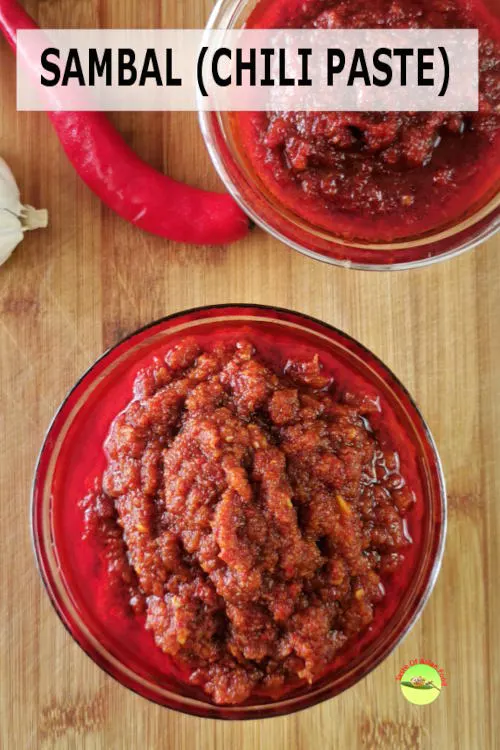
5. Use palm sugar and tamarind juice
Add the palm sugar and tamarind juice to the onion paste. You can use brown sugar to substitute the palm sugar.
Tamarind juice adds a tinge of citrusy flavor to the sambal. I soak a tablespoon of tamarind pulp in hot water to extract the flavor, then pour the extract through a fine wire mesh strainer to catch the pulp and seeds. Alternatively, use the store-bought tamarind paste if tamarind pulp is unavailable.
6. Simmer the sambal belacan
Now add the dried shrimp, belacan, palm sugar, blended chili, and tamarind juice to the sambal. You may need to add some water if it is too thick. Let it simmer over low heat for at least thirty minutes.
The simmering process will ensure the chili is fully cooked, with no more raw taste remaining. Also, the sambal will start to turn darker and dryer, and eventually, the oil will separate from the paste. When you see the red oil start bubbling around the paste, it is done.
Season the sambal with salt and remove it from the pan.
How to keep sambal
Let the sambal cool completely at room temperature.
Keep the sambal in an airtight container. You can store it in the refrigerator for up to a week.
If you intend to keep it longer, keep the sambal in a freezer-safe container. Sambal can store it for up to three months with no noticeable change of taste.
Related Malaysian food to this sambal belacan recipe
Sambal is an essential ingredient in some Malaysian cuisine on this blog. Here are my favorite dishes:
Nasi Lemak is the breakfast and lunch staple in Malaysia. Wrapped in paper and banana leaves, it has become the quintessential meal for the locals. Sambal is the main component of nasi lemak.
Ipoh shredded chicken noodles (怡保河粉) is one of the few noodles served with an exotic broth prepared with chicken bones and shrimp shells. Again, it is best to serve with a spoonful of sambal.
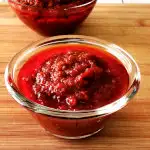
Malaysian sambal belacan recipe
Sambal is the chili paste widely popular in Malaysia. We put sambal on top of nasi lemak, mee goreng, prawn mee, and stir dry a variety of spicy dishes.
Ingredients
- 1 medium-size onion (about 200g)
- 5 cloves garlic
- 100ml (1/2 cup) vegetable oil
- 25g (1 oz) dried chilies
- 150g (5 oz) fresh red chilies
- 2 tbsp dried shrimp
- 1 tbsp belacan
- 1 tbsp palm sugar
- 1 tbsp tamarind juice
- 1 tsp salt
Instructions
- Blend the onion and garlic with some oil with an electric blender. Add some water to facilitate blending if necessary.
- Boil the dried chili in water for ten minutes. Remove and drain.
- Cut fresh red chilies into sections. Blend both chilies with some oil and water to form a chili paste.
- Soak the dried shrimp in water for fifteen minutes. Drain. Blend the dried shrimp until it looks like meat floss.
- Place the belacan in a small pan without oil, roast it slowly until thoroughly dry, and break it up into large granules.
- Saute the onion and garlic over low to medium heat until slightly brown and aromatic.
- Add the dried shrimp, belacan, and palm sugar. Cook for a while until it starts to become dry.
- Soak the tamarind pulp in hot water for ten minutes, then remove the pulp and seeds by pouring through a strainer.
- Add the chili paste and tamarind juice. Simmer over low heat for thirty minutes.
- Season with salt.
- When the red oil starts bubbling around the paste, it is done.
Recommended Products
As an Amazon Associate and member of other affiliate programs, I earn from qualifying purchases.
Nutrition Information:
Yield: 8 Serving Size: 1Amount Per Serving: Calories: 123Total Fat: 12gSaturated Fat: 1gTrans Fat: 0gUnsaturated Fat: 10gCholesterol: 3mgSodium: 304mgCarbohydrates: 5gFiber: 0gSugar: 3gProtein: 1g
This data was provided and calculated by Nutritionix on 3/17/2021

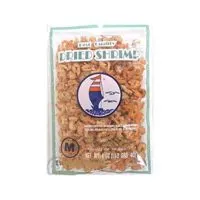
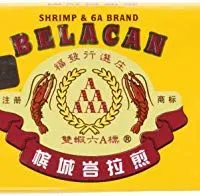

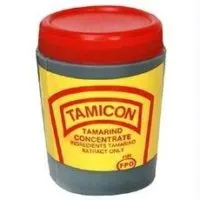
Nic
Thursday 19th of June 2025
May I know why for the last step I didn't see the red oil starts to bubble at all? Thanks
KP Kwan
Sunday 22nd of June 2025
If you do not see the red oil separated, it is likely that you are using less oil compared to commercially available products. This should not significantly affect the flavor.
Patricia Danker
Tuesday 13th of June 2023
You mentioned firstly sauté the onions and garlic, then you moved on to the sugar and tamarind…. When should the Chili paste be added?
KP Kwan
Saturday 17th of June 2023
Sorry for the confusion.I have correctedn it in the recipe. - Saute the onion and garlic over low to medium heat until slightly brown and aromatic. - Add the dried shrimp, belacan, and palm sugar. Cook for a while until it starts to become dry. - Soak the tamarind pulp in hot water for ten minutes, then remove the pulp and seeds by pouring through a strainer. - Add the chili paste and tamarind juice. Simmer over low heat for thirty minutes.
AH TEE CHANG
Saturday 20th of March 2021
Is there any substitute for tamarind pulp or juice. I can't find it in the grocery shops in my neighbourhood
KP Kwan
Sunday 21st of March 2021
Tamarind pulp is called Assam Jawa in Malay. I found one image for you. It should be able to get at market or grocery store. https://eshop.tesco.com.my/groceries/en-GB/products/7000715387
The Sudden Cook
Friday 19th of March 2021
The sambal looks amazing - you can tell by the colour! Tnx for the recipe.
KP Kwan
Friday 19th of March 2021
Thank you and you are welcome!
Paul Hart
Wednesday 17th of March 2021
Hi and thank you for your recipe. Given refrigeration; what is the shelf life of this Sambal? Paul.
KP Kwan
Friday 19th of March 2021
Should be fine up to a weak when refrigerated. Store it in the freezer if you want to keep it longer.